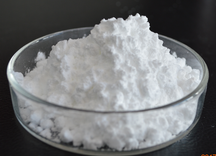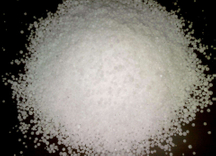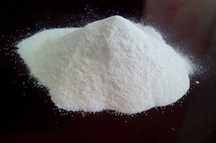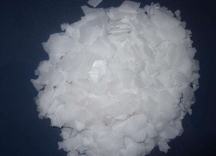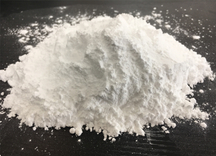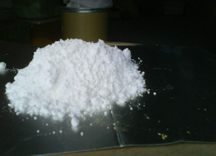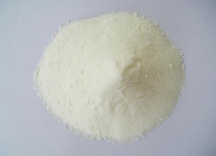
Adipic acid, a versatile organic compound, plays an essential role in the production of plasticizers—additives that enhance the properties of various plastics. Particularly in materials such as Polyvinyl Chloride (PVC), adipic acid-based plasticizers provide significant improvements in flexibility, durability, and overall performance. This article will delve into how adipic acid plasticizers work, their impact on PVC and other plastics, and why they are crucial for various industries.
What Is Adipic Acid?
Adipic acid is a dicarboxylic acid commonly used as a key raw material in the production of plasticizers, particularly adipates. It is derived from petrochemical sources and is a crucial building block for producing various polymers and additives. Adipic acid can be esterified with alcohols to create plasticizers that are then used to modify the physical properties of polymers. These plasticizers improve the flexibility, processing, and overall performance of plastics, especially in demanding applications where plastic materials must meet specific requirements for strength, flexibility, and longevity.
What Are Plasticizers?
Plasticizers are chemical compounds that are added to polymers to increase their flexibility, workability, and performance. These additives function by reducing the intermolecular forces between polymer chains, which allows the chains to move more freely. In turn, this leads to an increase in the material's flexibility, elasticity, and moldability. There are two main types of plasticizers: phthalate-based and adipate-based. While phthalate plasticizers have been the most commonly used, adipic acid-based plasticizers are growing in popularity due to their enhanced properties and environmental advantages.
Adipic acid plasticizers, such as Diethylhexyl Adipate (DEHA) and Dioctyl Adipate (DOA), are ester derivatives of adipic acid that are highly effective in improving the flexibility and processability of various plastics. These plasticizers are widely used in the production of PVC and other plastic materials, especially those used in flexible applications such as wires, cables, flooring, and automotive components.
How Do Adipic Acid Plasticizers Work in PVC?
PVC, or Polyvinyl Chloride, is a widely used plastic material known for its strength and rigidity in its unplasticized form. However, for many applications, particularly those requiring flexibility and softness, PVC must be "plasticized" using additives like adipic acid-based plasticizers. These plasticizers are added to PVC formulations during the manufacturing process, where they integrate with the polymer matrix to alter its properties.
The way adipic acid plasticizers work in PVC is through a process known as plasticization. When plasticizers are added to PVC, they infiltrate the polymer chains and reduce the intermolecular forces between them. This reduction in intermolecular forces allows the chains to slide past one another more easily, resulting in a softer, more flexible material. The enhanced flexibility allows PVC to be used in a wider range of applications, such as flexible tubing, electrical cables, and films, where rigidity is undesirable.
Benefits of Adipic Acid Plasticizers in PVC
1. Increased Flexibility and Elasticity
One of the most significant benefits of adipic acid plasticizers in PVC is their ability to greatly enhance the material’s flexibility and elasticity. PVC alone is a rigid material that lacks the ability to bend or stretch without cracking. However, by adding adipic acid-based plasticizers, PVC becomes more flexible, making it suitable for use in products that need to bend, stretch, or flex without losing their structural integrity.
Adipate plasticizers, such as DEHA and DOA, provide PVC with improved flexibility over a wide temperature range. This is particularly important for applications such as automotive components, flexible flooring, and electrical cables, where materials must maintain their performance in both hot and cold environments.
2. Improved Durability
Adipic acid plasticizers not only enhance flexibility but also improve the overall durability of PVC and other plastics. These plasticizers can help plastics resist cracking, brittleness, and wear and tear over time. By adding a flexible, durable layer between the polymer chains, adipate plasticizers help to ensure that the material can withstand mechanical stress, physical impact, and environmental factors such as UV exposure and moisture.
For example, PVC products like cables and wires that are exposed to constant bending are less likely to crack or degrade when adipic acid plasticizers are used. This is because the plasticizers provide an elastic quality to the material that allows it to recover its shape after being bent or stretched.
3. Enhanced Processability
Adipic acid-based plasticizers improve the processability of PVC by making the material easier to mold and shape. During the manufacturing process, PVC is often heated and extruded into various forms, such as films, sheets, and pipes. The addition of plasticizers lowers the material's viscosity, which makes it easier to process and shape into these forms.
Plasticizers also improve the flow characteristics of PVC during the extrusion process, allowing manufacturers to produce more complex shapes and designs with greater ease. This is particularly important in industries like automotive and construction, where custom-designed PVC components are needed for a wide variety of applications.
4. Low Volatility and Good Stability
Another advantage of adipic acid plasticizers is their relatively low volatility and excellent chemical stability. This makes them suitable for applications that require long-lasting performance, such as in the production of flooring, roofing membranes, and medical devices. Because these plasticizers are less prone to evaporation or degradation over time, they contribute to the long-term stability of the PVC products.
Additionally, adipate plasticizers provide better resistance to hydrolysis and oxidation compared to some other plasticizers, which ensures that the final product maintains its flexibility and performance even under harsh conditions.
5. Environmental and Health Benefits
Adipic acid-based plasticizers are considered a safer and more environmentally friendly alternative to other plasticizer types, such as phthalates. Phthalates, a group of chemicals commonly used in plasticizers, have come under scrutiny due to their potential health and environmental risks. In contrast, adipic acid plasticizers are less toxic and have a better safety profile, making them more appealing to manufacturers and consumers looking for sustainable and health-conscious alternatives.
Applications of Adipic Acid Plasticizers in Other Plastics
While PVC is one of the primary plastics that benefits from adipic acid plasticizers, these additives are also used in various other polymers, including:
1. Polyurethanes (PU)
Adipic acid plasticizers are commonly used in the production of flexible polyurethane foams. These foams are used in furniture, mattresses, automotive seats, and insulation materials. The plasticizers enhance the softness, flexibility, and longevity of the foam, improving its overall performance.
2. Rubber Products
Adipic acid plasticizers are sometimes incorporated into rubber products to enhance their flexibility and durability. This includes products like seals, gaskets, and hoses used in automotive and industrial applications. The improved flexibility and stability of rubber products made with adipic acid plasticizers ensure they can withstand repeated use and extreme conditions.
3. Coatings and Adhesives
Adipic acid plasticizers are also used in coatings and adhesives, where flexibility and bonding strength are critical. The plasticizers improve the adhesion properties of paints and coatings, as well as the elasticity of the finished product.
Conclusion
Adipic acid plasticizers are crucial for improving the performance of PVC and other plastics. They enhance flexibility, durability, and processability, making plastics suitable for a wide range of applications such as automotive parts, medical devices, and consumer products. These plasticizers not only improve the functionality of plastic materials but also offer environmental and health benefits, positioning them as a safer and more sustainable alternative to traditional plasticizers.
As industries continue to prioritize high-performance and sustainable materials, adipic acid plasticizers will remain integral to producing flexible, durable, and efficient plastics. For companies seeking high-quality adipic acid and plasticizer solutions, Weifang Tainuo Chemical Co., Ltd. offers reliable products that meet the diverse needs of various industries, ensuring superior performance in plastic formulations.











